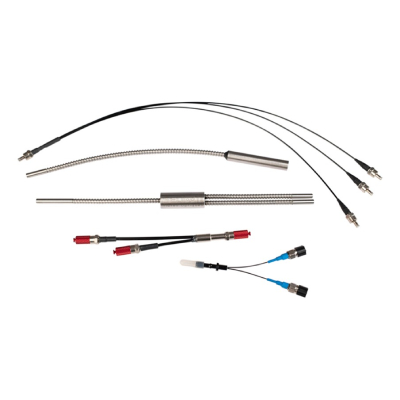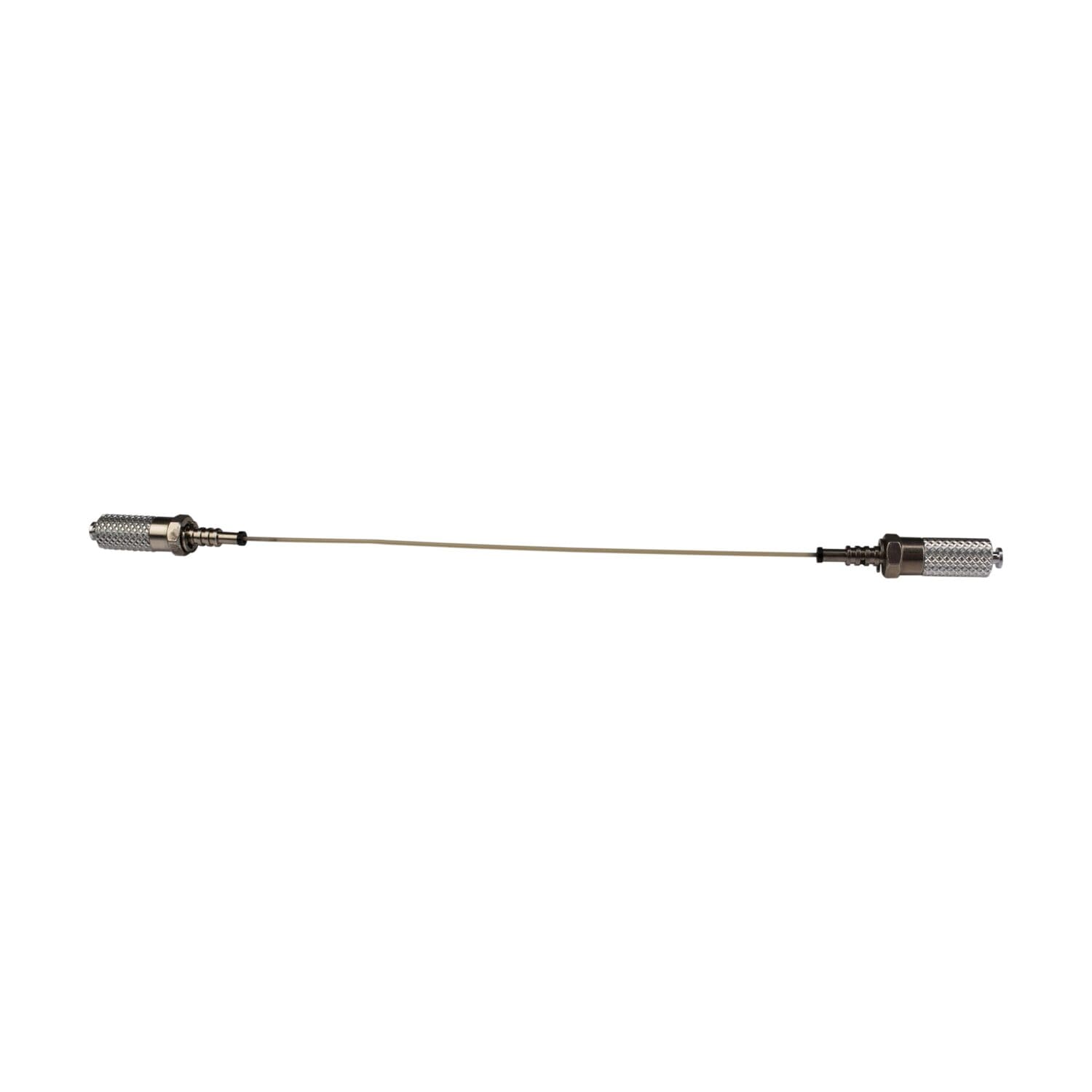Carbon DioxideMeasurement
Fiber-optic solutions for measuring CO2 in space.
SEDI-ATI took part in the project by supplying specific patchcords, fiber-optic bundles, and feedthroughs with our FCXtreme® connector, a compact FC connector for defense and aerospace applications.
MajorContraints
The solution must be resistant to:
- Vibration and shock
- High accelerations
- Dynamic temperature variations
- Vacuum conditions
Use of 100% inorganic materials.
TheChallenge
To create fiber-optic solutions ranging from a few meters to several tens of meters, based on special cords, custom-made hermetic feedthroughs and passages, with connectors that also meet the constraints of the space environment.
The Copernicus CO2M mission
The “Copernicus Anthropogenic Carbon Dioxide Monitoring” mission, more commonly known as CO2M, is part of the Copernicus program of the European Space Agency (ESA), in collaboration with the European Commission (EC) and the Liège Space Center (CSL). This programme focuses on our planet and its environment for the benefit of Europeans citizens. In fact, the aim of Copernicus is to observe the Earth from space, providing data for environmental protection, climate monitoring, natural disaster, and other social tasks. More specifically, the CO2M mission aims to detect, quantify and monitor anthropogenic emissions of carbon dioxide (CO2) into the Earth’s atmosphere, CO2being the main greenhouse gas produced by Man and responsible for global warming.
There will be at least two identical satellites positioned in low orbit (around 700 km), which will be operated throughout the CO2M mission over a period of more than 7 years. These satellites will be used to draw CO2 concentration maps to highlight the main CO2-emitting areas (countries/regions/cities) on the globe. The launch is scheduled for late 2025/early 2026.
Each satellite will carry three instruments that will observe the globe at the same time:
- The main “CO2i/NO2i” instrument, composed of the CO2 imager spectrometer (CO2i) to measure CO2 in the atmosphere as well as Ch4 methane (another greenhouse gas), and the NO2 imager spectrometer (NO2i) to measure NO2 nitrogen dioxide (a tracer of the anthropogenic nature of CO2 ).
- The CLIM (CLoud IMager) to detect the presence of clouds in order to filter/eliminate certain data from the main instrument CO2 estimation is poor in the presence of clouds).
The ‘MAP’ (Multi Angle Polarimeter) to characterise the types of aerosols and determine their quantities, in order to improve the quality of CO2 restitution by the main instrument. The latter is highly dependent on knowledge of the aerosol content.
The main instrument CO2i/NO2i
The main CO2i/NO2i instrument is a system of high-resolution spectrometers. It comprises the CO2i and NO2i imaging spectrometers. CO2M is the first Earth observation mission to deploy a new type of entrance slit in its imaging spectrometers, based on multimode optical fibers.
The CO2i imager is equipped with three spectrometers covering the following spectral bands:
- 1 near-infrared (NIR) band: 747-773 nm,
- 1 short-wave infrared band (SWIR-1): 1595-1675 nm,
- 1 short-wave infrared band (SWIR-2): 1990-2095 nm.
The NO2i imager is an other spectrometer implemented as the fourth spectral ba,d of the main instrument, and operates in the visible range: 405-490 nm.
The CLIM instrument
CLIM is a Cloud Imager/mapper. This spectral imager consists of two sub-units, CLIM OU (Optical Unit) and CLIM EU (Electronic Unit). It supports the CO2i/NO2i instrument. CLIM is used to determine the presence and position of clouds in the field of view of the CO2i in order to support data verification and line-of-sight analysis (LoS analysis).
The CLIM design is linked to the PROBA-V mission, which involves developing new space technologies by launching several satellites into space.
SEDI-ATI’s involvement in several OGSEs in the CO2M project
OGSEs (Optical Ground System Equipements) are ground equipments used to test the optical performance of on-board satellite systems, in order to ensure that their missions are carried out correctly.
SEDI-ATI is involved in various OGSEs for the CO2i/NO2i and CLIM instruments in the CO2M project. These OGSEs are fundamental because they enable the CO2M mission’s flight instruments to be built, tested, calibrated and validated.
To calibrate the CO2i/NO2i instrument, an on-board flight calibration unit called “FCU” is used. SEDI-ATI manufactures the “octopus“-type fiber optic cables that are mounted in the FCU and connected to the “FCU-S” source modules. In fact, FCU-S sources are made up of several laser modules of different wavelengths, fiber-reinforced at the output, which are used as reference values for instrument calibration. The patchcords are space-compatible (low outgassing materials: peek or stainless steel sheath, non-outgassing glue, etc.) and are fitted with our aerospace-qualified FCXtreme® connector, itself space-compatible.
For the CLIM instrument, SEDI-ATI produces optical fibre assemblies on vacuum-compatible sealed feedthroughs. These fibres are used in the ‘Geometry’, ‘Radiometry’, ‘Stray Light’ and ‘Stray Light Verification’ OGSEs.
Use of space-compatible sheaths and connectors
To meet the requirements of the CO2M project, SEDI-ATI Fibres Optiques supplied several fibre optic assemblies:
- Special octopus bundles and cords for the space industry, on GI 50/125 fibres, with low outgassing peek or stainless steel sheaths, and fitted with our FCXtreme® connectors.
- Large fibre (200, 400, 600 and 1000 μm core) vacuum-compatible sealed feedthroughs.
We supplied patch cords enabling several wavelengths to be measured at the same time, with two different types of sheathing (peek and stainless steel), connected to space-compatible FC/FCX® connectors. Our FCXtreme® connector is dedicated to space and defence applications, FC J.I.S compatible, versatile, compact and rugged, qualified to operate in conditions of high vibration and with dynamic temperature variations of up to +125°C.
SEDI-ATI Fibres Optiques’s range of fiber-optic feedthroughs is also perfect to the exercise. Coupled with unique know-how and exceptional expertise, it is possible to deliver custom-made fiber-optic feedthroughs and in-line feedthroughs for vacuum. Also, for the CLIM instrument, we are working on long assemblies that can be more than 20 metres long!
These solutions have all been produced using no degassing materials.
SEDI-ATISolutions
- Special space patchcords and octopus bundles equiped with space-compatible FCXtreme® connector
- Peek and stainless steel sheaths
- Vacuum-tight feedthroughs and passages
AdvantagesSolution SEDI-ATI
- Compact FC
- Space-compatible
- Made from non-degassing materials
- Works over long distances (+20m)
Related products
Custom-made hermetic fiber-optic feedthroughs
Following your specific requirements, SEDI-ATI can study the feasibility of building custom-made hermetic fiber-optic feedthroughs.
FCXtreme® connector for defense and aerospace applications
The FCXtreme® connector is a high-performance versatile, and compact FC-type connector, designed for defense and aerospace applications.
Fiber optic bundle assemblies for spectroscopy
Fiber-optic bundles are perfectly adapted to perform diffuse reflectance spectroscopic measurements.
Inline hermetic fiber-optic feedthroughs
The RETA inline hermetic fiber-optic feedthroughs are designed for high & ultra-high vacuum applications. Some specific products of this product line are also suitable for pressure applications up to 1000 bars.
Vacuum fiber optic cables
SEDI-ATI Fibres Optiques offers both singlemode and multimode vacuum fiber optic cables for vacuum levels of 10-8 to 10-10 mbar.











